Marathon Des Sables Frequently Asked Questions
I’m no athlete. In fact, I’m not even a runner (although I did once finish 8th in the North Pole Marathon!). Despite that, in April 209 I ran 6 marathons in 6 days across the Sahara desert. This is the ‘Marathon Des Sables‘, also known as The Toughest Footrace on Earth. You can read all about my experience running the MDS here. In this article though, I’m going to whizz through a list of Frequently Asked Questions. Questions that I wish I knew the answers to before I attempted this crazy race!
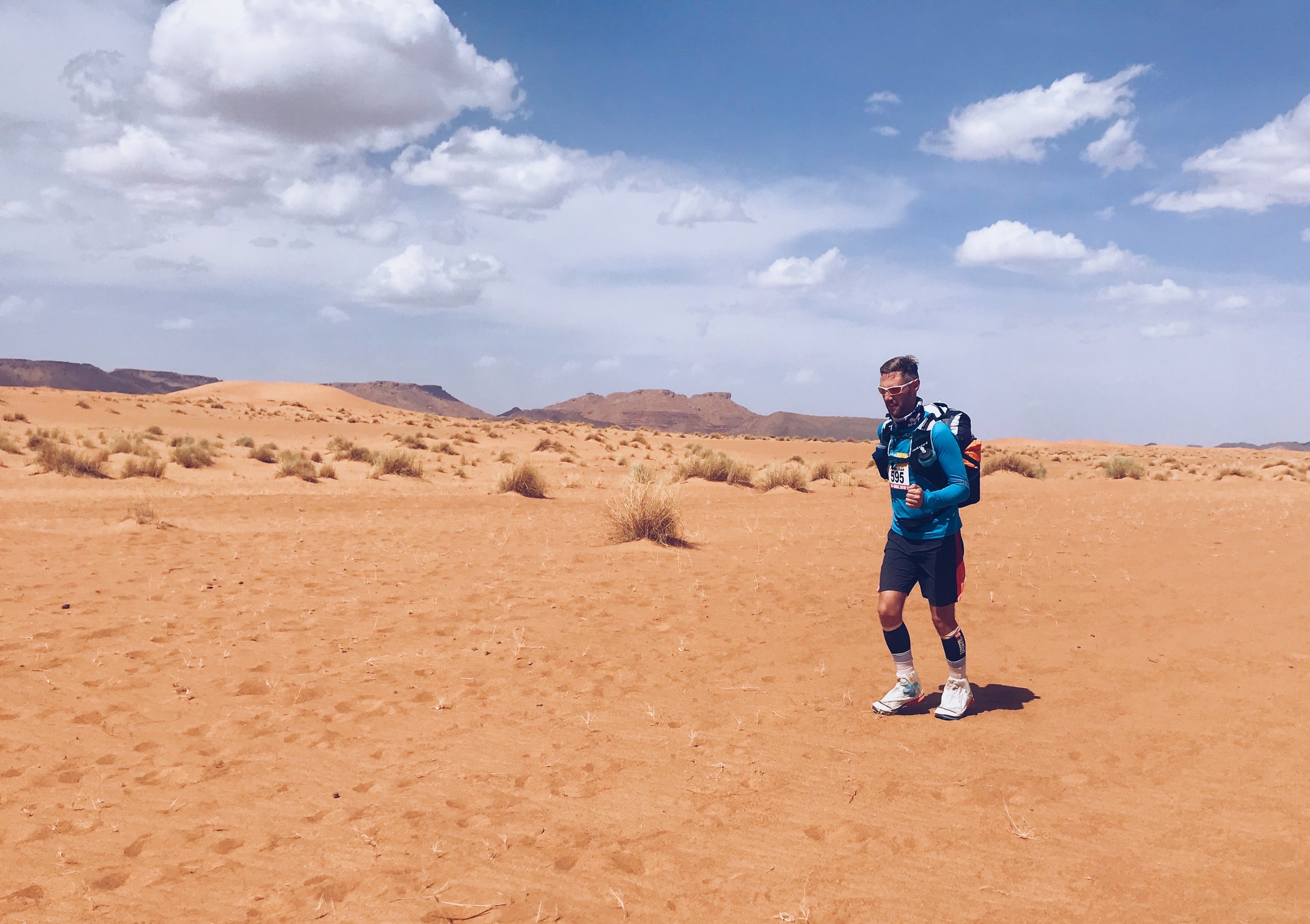
What is the Marathon Des Sables
It’s an extreme ultramarathon, lasting multiple days, that’s run in April each year in the Sahara Desert in Morocco. The race has been going for 30+ years, and normally runs 6 marathons in 6 days. One of the hardest marathons in the world (but not the hardest, or the most epic, that’s the Eye of the Sahara Ultra Marathon every December, you should do it!)
How Long is the Marathon Des Sables
The race varies in length slightly each year but somewhere between 220-260km each time, roughly 6 marathons. Day 1,2,3 and 6 are approximately marathon length, day 4 is a double-marathon, and day 5 is a rest day.
The whole expedition, from start to finish, lasts 10 days. That includes flying in, transfers, hotels at the end etc.

Where does the Marathon Des Sables Take Place?
On the Moroccan side of the Morocco/Algerian border. You drive to the end of the road, where the desert meets Civilization. Make camp there for 2 days, and then you begin running. The map below shows the last town where you leave the buses behind.
How Do I sign up or register for the Marathon Des Sables?
You need to sign up in advance. About half of the people who make up the runners at the MDS are British and Irish, the rest are made up a lot of French and German runners and of course, another 100+ nationalities around the globe. Places disappear quickly There are 2 ways to sign up:
- marathondessables.co.uk: This is for the UK and Irish runners. The package includes pretty much everything from when you meet in Gatwick Airport, London, until 10 days later you’re back in Gatwick airport. I choose this package and was very happy with it.
- marathondessables.com: This is for international runners and those on a tighter budget. €3170, but you have to get to the race yourself, hotels after the race are much lower quality. Still a great option if you’re saving the pennies.
How Do I get to the Marathon Des Sables?
If you sign up with the UK website, all you have to do is get to Gatwick airport, London. Everything else is taken care of. If you go for the cheaper option, you meet in Ouarzazate, Morocco and hop on the buses for the race.
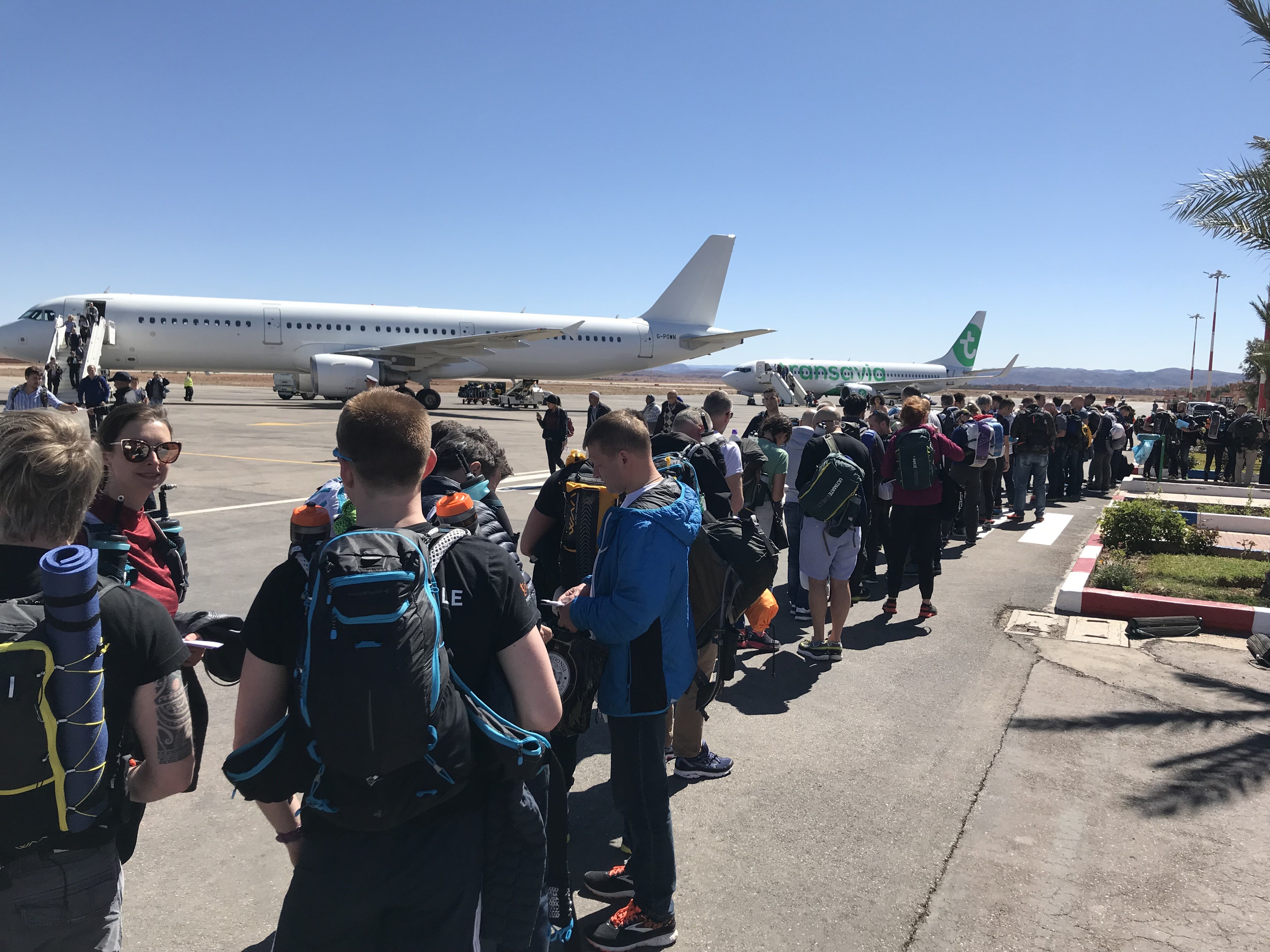
How Much Does the Marathon Des Sables Cost to Enter?
In USD, it’s $3500 to $4500 depending on if you go with the UK higher-end, package or with the international sign-up. Believe me, once you’ve finisihed the race, you’ll wish you were staying in the 5* place!
What are the Dates for the Marathon Des Sables?
They vary each year. 2019 was April 5-15. 2020 is April 3-13. It’s generally always early-mid April though.
Where Do You Eat on the Marathon Des Sables?
The whole expedition is 10 days. But for the actual 6-day race, you’re self-sufficient. That means on Day 1 and Day 2 when you first hit the desert, the food is supplied for you. But as of Day 3 of the expedition (Race Day 1), you’re 100% self-sufficient. Here then, each morning you’ll eat your expedition food that you carry in your bag as you run each day. Some people will make a little camp fire and have a hot breakfast, some will just add water to their packs and eat it cold. I did the latter, too much work to make a fire in the morning! In the evenings, it’s the same again but this time generally everyone uses camp fires to heat their water and then they ‘enjoy’ a hot dinner. That means lunchtimes is just snacks, gels, energy bars as you run. Generally, you don’t ever stop to make food on the race days except for perhaps on the long day.

Where Do You Sleep on the Marathon Des Sables?
You sleep in something called a Bivouac, a rudimentary tent. This, along with the water, is the only thing you don’t have to take care of yourself. Each night, after you return to camp (different camp each night), your tent will be waiting for you. It’s essentially some material propped up with some wood, but it protects you from the sand storms and gives you a pretty cool atmosphere with your tent mates. I’d recommend clearing the sand of big rocks as soon as you return though!
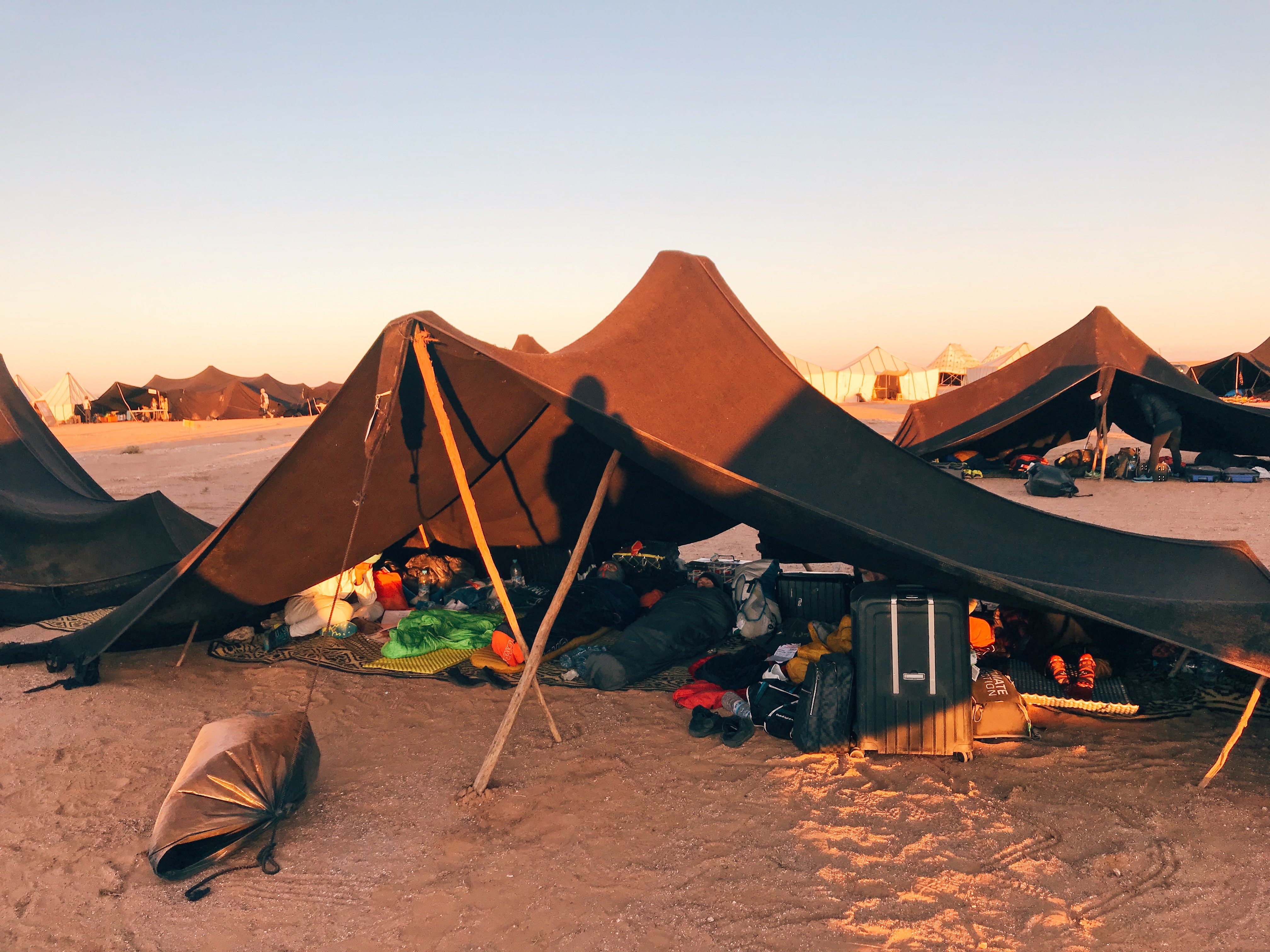
What Are the Toilets like on the Marathon Des Sables?
Not too bad. There are toilet tents about 300m from camp each night. It’s a plastic chair with a hole in the middle, you have a poo-bag, pop the bag around the plastic chair, do your business, tie the bag, throw it in the bin outside. Not luxury, but could be a lot worse. The difference between how shy you are on Day 1 vrs Day 6 is quite funny!
What about Water on the Marathon Des Sables?
You have to carry all your gear, your food, your snacks, BUT you don’t have to bring your own water. Each day, during the marathon, there are check-points every 10km or so. Here you get allocated your water ration (normally 1 or 2 1.5litre bottles), and then when you return to camp each afternoon/evening, you get double that allocation. Water is in short supply but you do get enough water don’t worry, in fact sometimes I ever turned down the water because we had so much.
Do I have to be an Athlete to Enter the Marathon Des Sables?
Depends on your definition. But I’m not an athlete, and I did just fine. You don’t need to be a crazy ultra runner, it’s more about mental strength. What you do have to do though, is respect the MDS. Anyone of moderate fitness can do it with 6 months training, 3 months if you’re already in marathon shape, and probably 9-12 months if you’re out of shape. But no, you don’t have to be an athlete complete with a six-pack and bulging biceps.
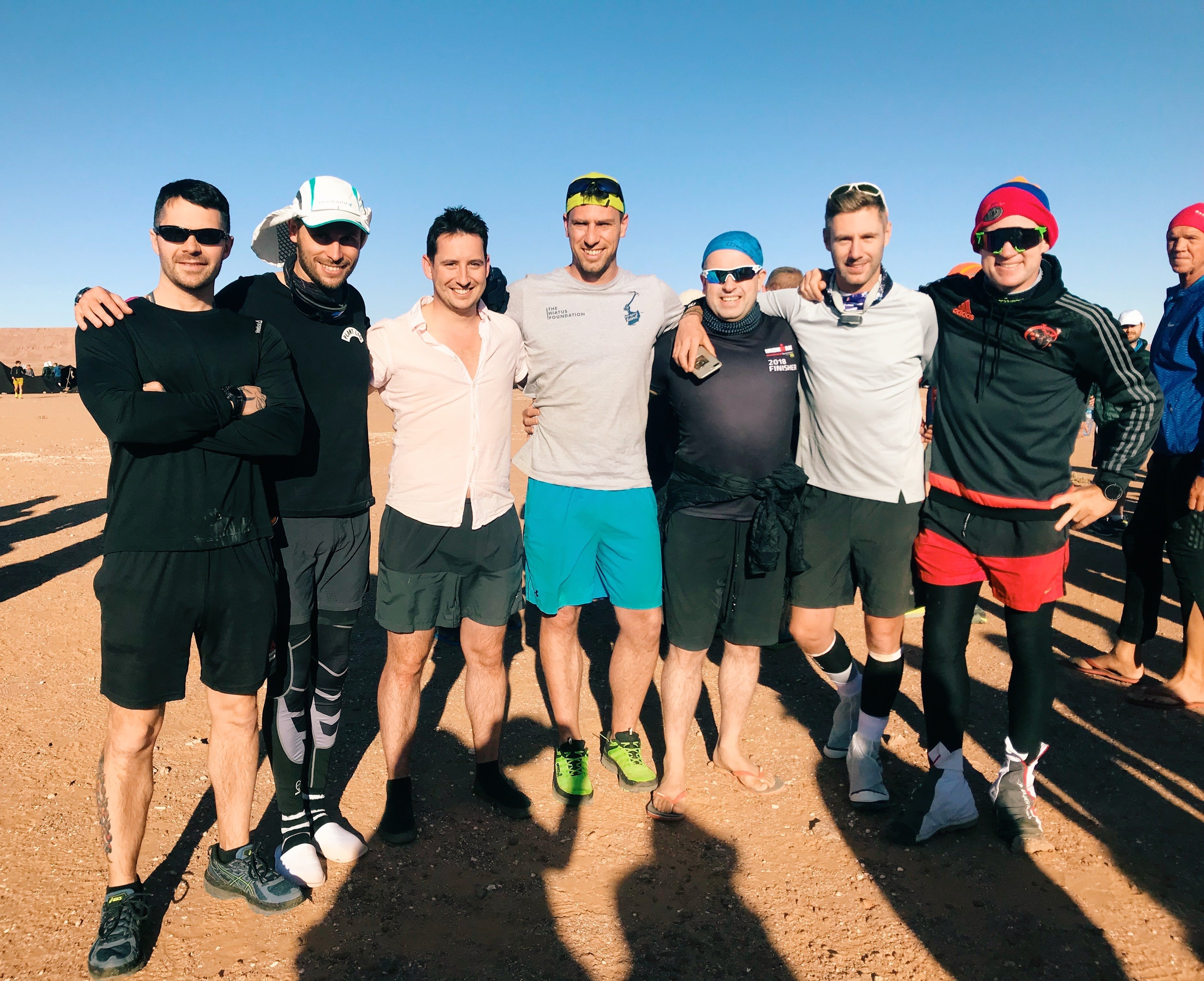
What’s the terrain like on the MDS?
Varied. Expect about 1/4 of it or so on actual sand dunes. Soft sand, up and down hills, that’s super tough. Then another quarter on rocky hills/mountains/river beds where you can break your ankle if you’re not careful. 1/4 on hardish rocky sand, these sections are very runnable and your chance to speed up. And then the final quarter is a blend – water, bushes, hills, boulders, everything.

Is there any wildlife, snakes, spiders or scorpions?
Part of the compulsory kit is an anti-venom pump. I felt very James Bondy carrying that around, but I didn’t see any scorpions, nor did I hear any tales of them. I did, however, see a snake. That was cool. What wasn’t cool though…. a camel spider running around the inside of our bivouac. I was 100m away screaming within 10 seconds. Not a good night’s sleep that night!
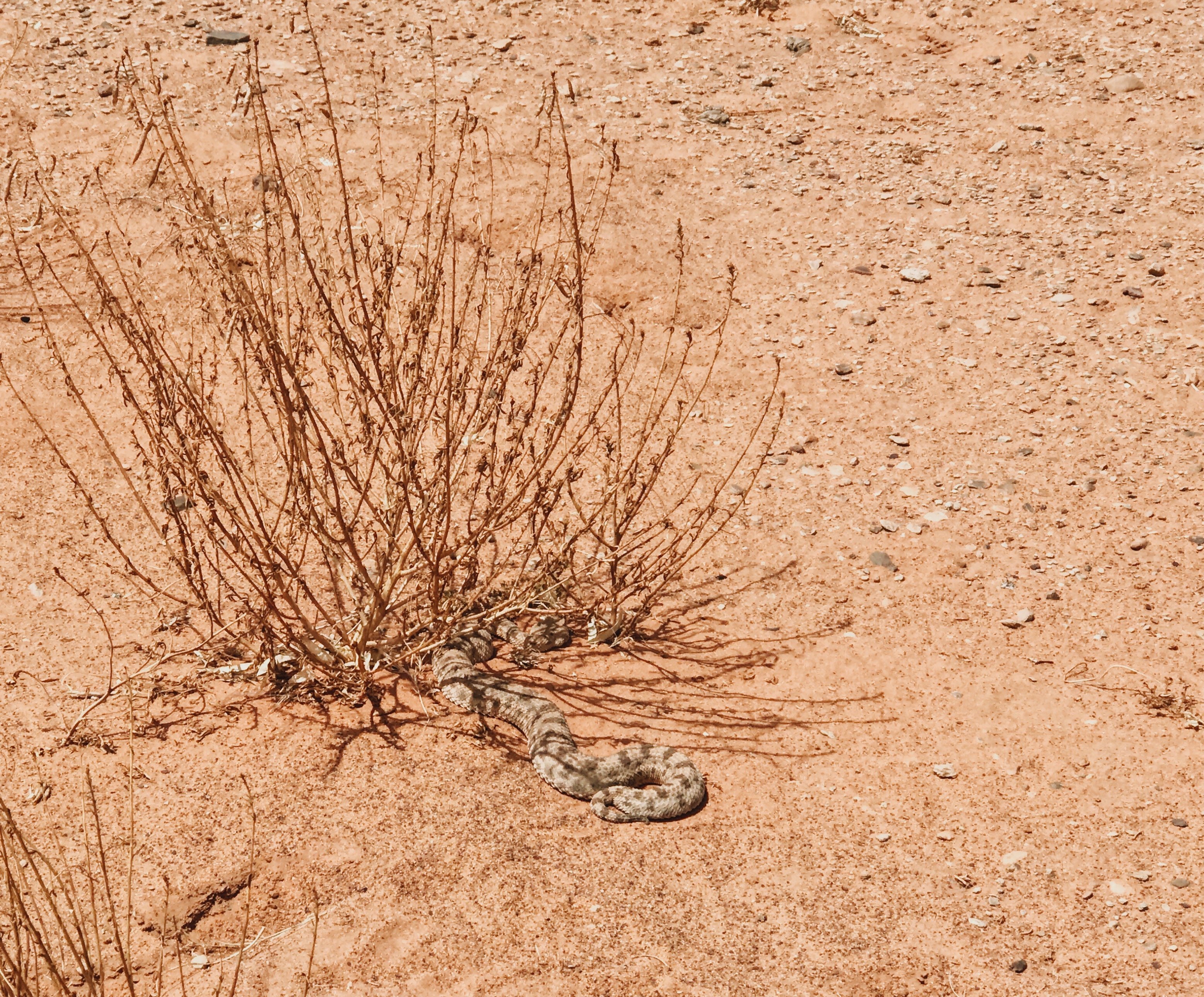
How Long Does A Marathon Take in the Marathon Des Sables?
I searched long and hard for this answer when I was signing up. Ok so the top 10 runners are so run roughly a 3 hour marathon in the desert (that might sound slow, but wait until you’re running up sand dunes!). The slowest runners run around a 10 to 12 hour marathon. I was somewhere in the middle. Any slower than 12 hours or so is the cut-off point. Miss that and you’re out.

What’s the Failure Rate on the Marathon Des Sables?
95% of people complete it, so the failure rate is 5%. I thought that sounded low when I did my research BEFORE I ran the MDS, and then on Day 2 or 3 I couldn’t believe it was accurate. It’s SO tough. But so is everyone who signs up, and yup 95+% complete. Humans are amazing.
Do people every Die in the Marathon Des Sables?
The professionalism is amazing, and the costs are high. So with helicopters, doctors and nurses at every corner, only 2 people have ever died on the MDS. Remarkable, and a tribute to the organisation.
Can Men and Women Enter the Marathon Des Sables?
Yup, men, women, old and young. More on that below.
What’s the Age Range and Limit for the Marathon Des Sables?
There is no upper age limit, and in fact a 73 year old finished the year I did it! You have to be 16 or over to enter on the younger end of things.
What do you eat on the Marathon Des Sables?
For breakfast and dinner, most people eat expedition food. You know this little packets that you just add water to? Those things. You want as many calories, with as little weight as possible. I had 1000 calorie expedition food for breakfast (Cold) and dinner (hot) each night. For lunch during the race, it’s energy gels, tribe bars etc throughout the day.
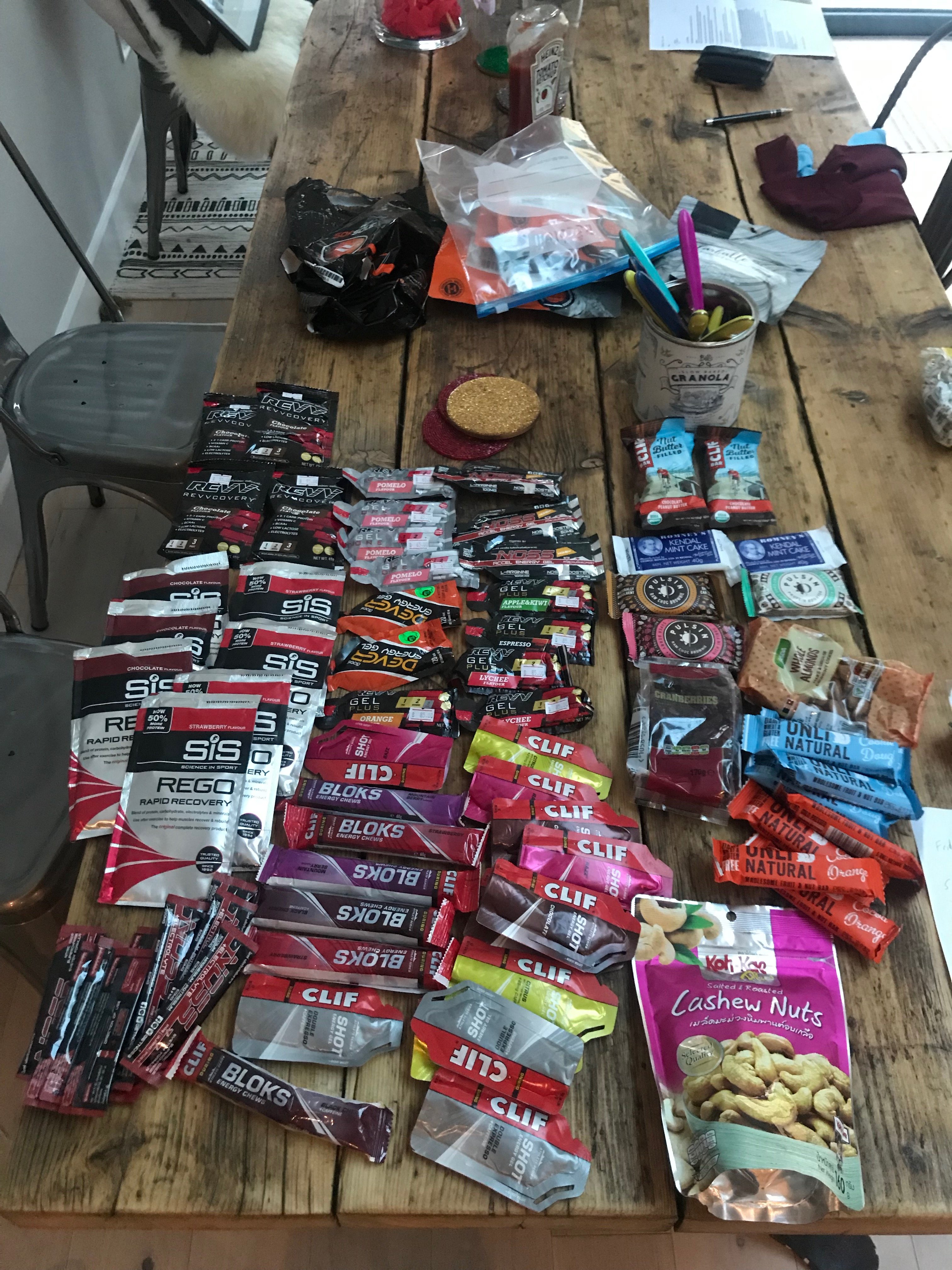
What Do You Have to Carry When You run the Marathon Des Sables?
Everything except for water and your tent. So that means your sleeping bag, pillow, mattress, all your clothes, all your food and any tech you want (solar charger etc). You have to carry a minimum of 2,000 calories per day, and a minimum of 7kgs in your bag, with a maximum of 15kgs. My bag was around 12kgs on Day 1.
What About Gear for the Marathon Des Sables? What Are the Best Shoes/Sneakers/Bag for the Marathon Des Sables?
I wrote a separate article about that here. You pick up bits and bobs everywhere, but My Race Kit are where most people buy there stuff.
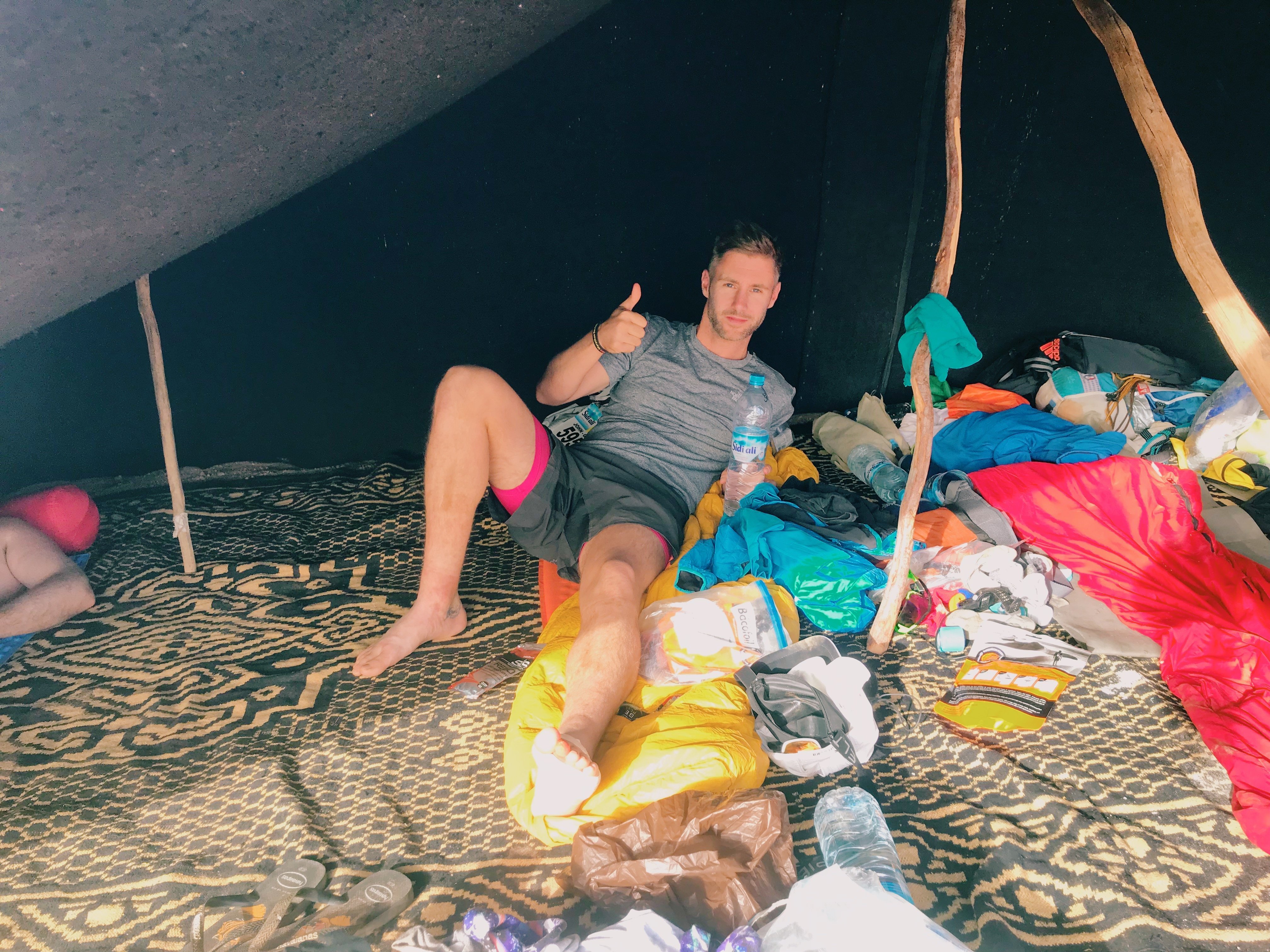
Does the MDS sell out?
Yes, so book early.
How Many People Run the Marathon Des Sables Each Year?
Around 1000 roughly.
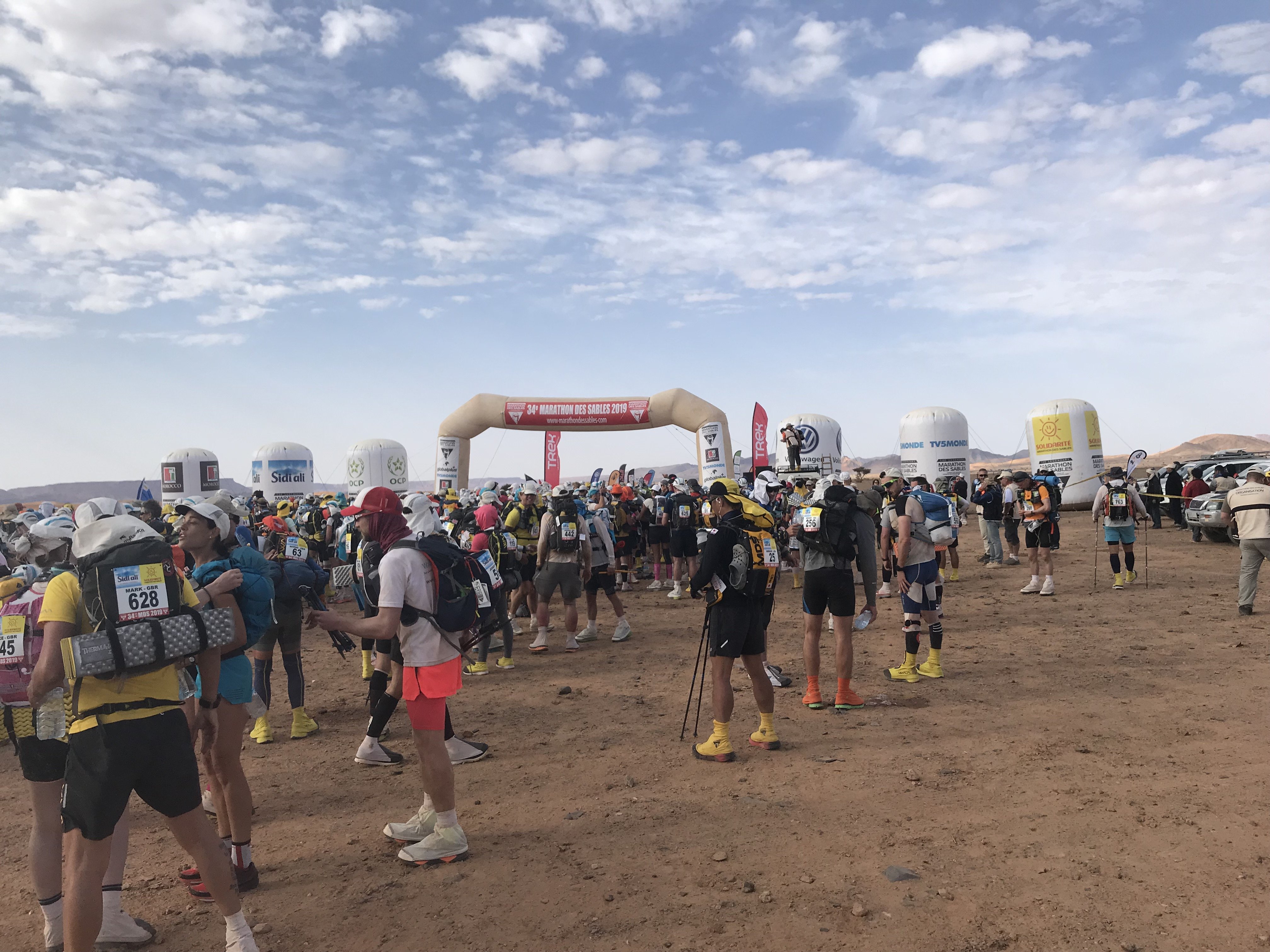
How Difficult is the MDS?
How long is a piece of string? After finishing, and now looking back, it’s all rainbows and unicorns. Tough? Sure, but very doable. Contrast there to the end of Day 2 when I lay down saying “that was the f*cking hardest day of my life, LITERALLY, the hardest day“. It’s pretty hard, 7/10.
What about your feet on the MDS? Is it true they get Destroyed?
Just pics….

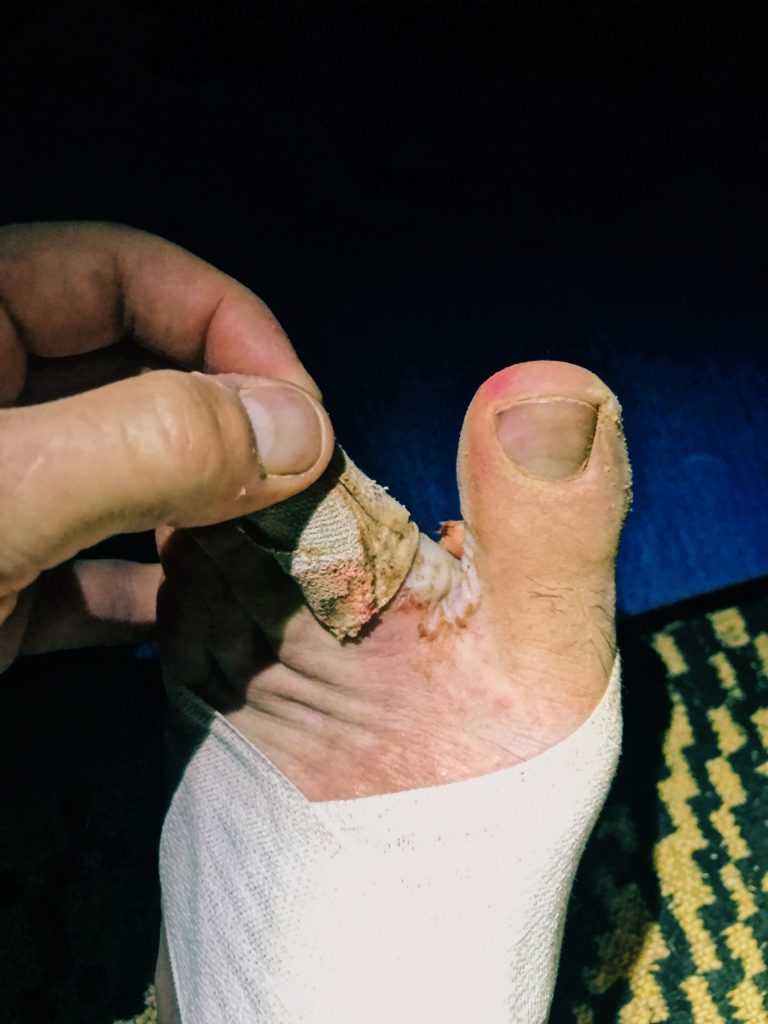
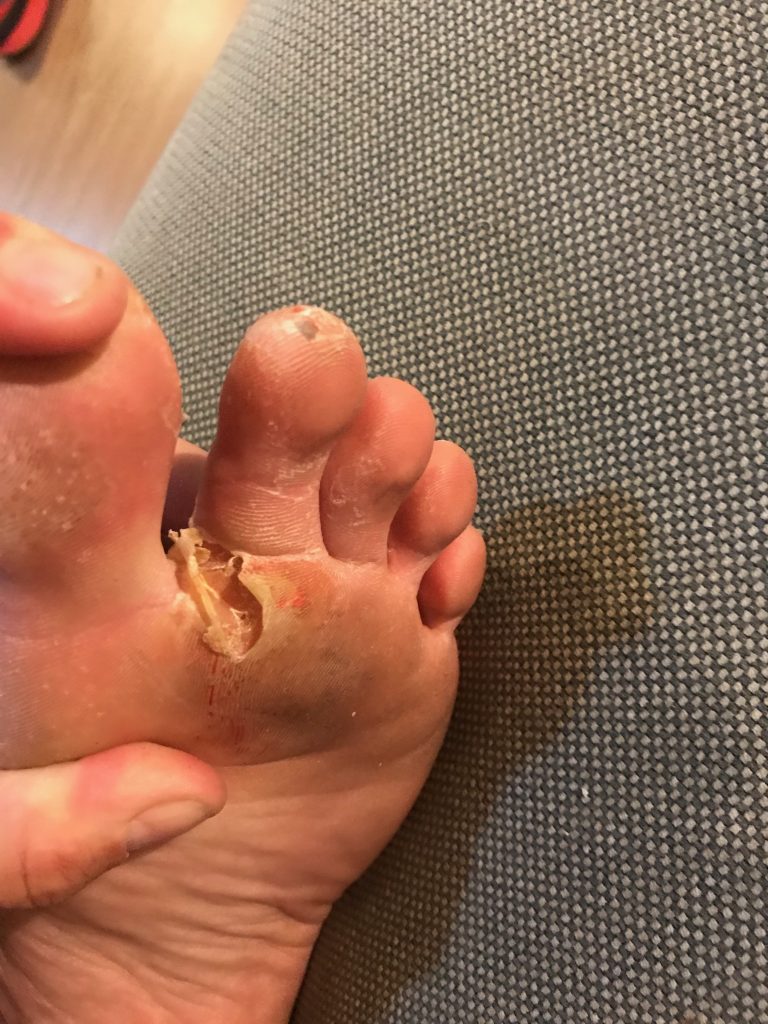
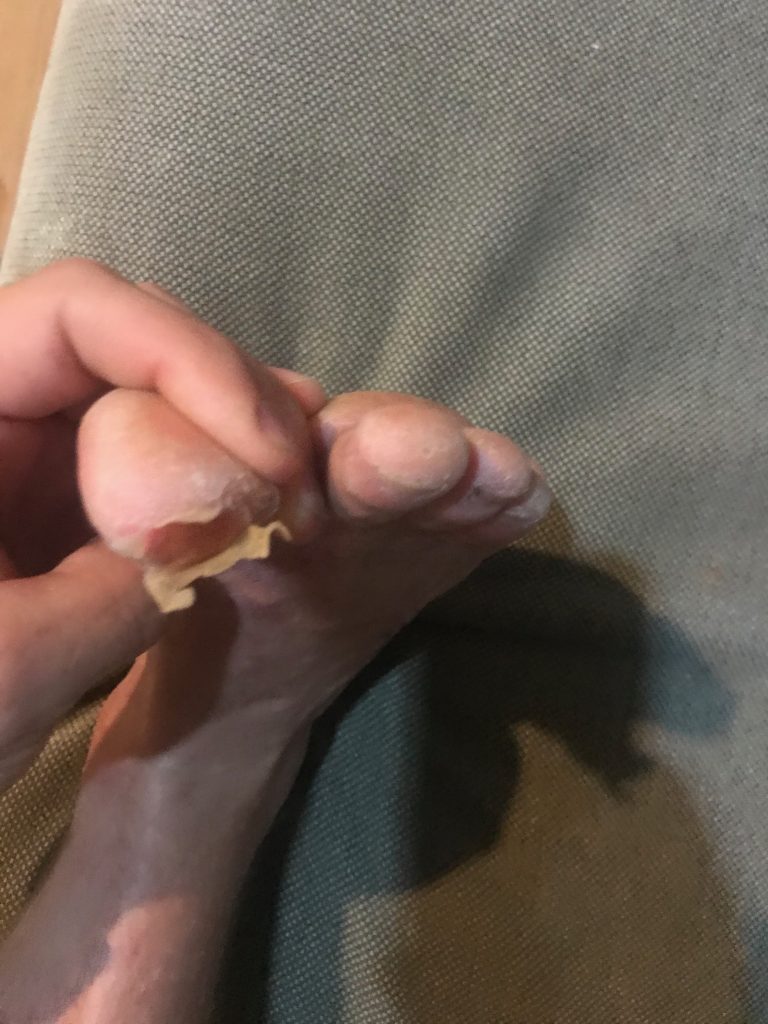
How Much Do You Have to Train for the MDS?
I’d recommend a minimum of 6 months of training to make it manageable. Ideally, 12 months to be honest. And train with a 10kg bag. Please. I didn’t and I regretted it every single day on the actual MDS.
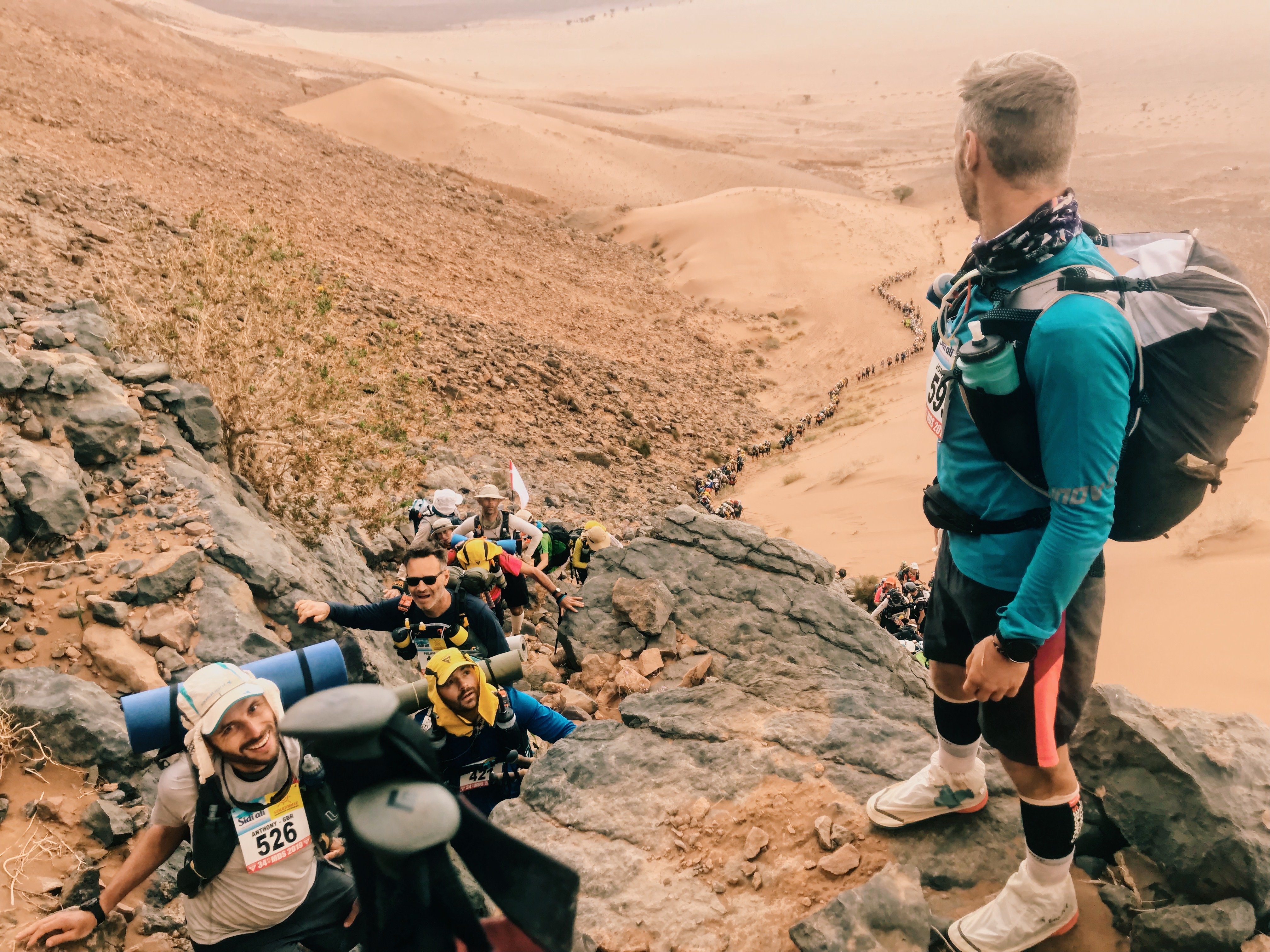
Remember, you can read all about my experience in the 2019 Marathon Des Sables here. And about the best way to pack for the MDS here. And if you have any other questions about the MDS, comment below and I’ll let you know my thoughts and experiences. I honestly can’t recommend this race highly enough, it’s truly life-changing. Good luck.
Remember, never travel without travel insurance! And never overpay for travel insurance!
I use HeyMondo. You get INSTANT quotes. Super cheap, they actually pay out, AND they cover almost everywhere, where most insurance companies don't (even places like Central African Republic etc!). You can sign-up here. PS You even get 5% off if you use MY LINK! You can even sign up if you're already overseas and traveling, pretty cool.
Also, if you want to start a blog...I CAN HELP YOU!
Also, if you want to start a blog, and start to change your life, I'd love to help you! Email me on johnny@onestep4ward.com. In the meantime, check out my super easy blog post on how to start a travel blog in under 30 minutes, here! And if you just want to get cracking, use BlueHost at a discount, through me.
Also, (if you're like me, and awful with tech-stuff) email me and my team can get a blog up and running for you, designed and everything, for $699 - email johnny@onestep4ward.com to get started.
Do you work remotely? Are you a digital nomad/blogger etc? You need to be insured too.
I use SafetyWing for my digital nomad insurance. It covers me while I live overseas. It's just $10 a week, and it's amazing! No upfront fees, you just pay week by week, and you can sign up just for a week if you want, then switch it off and on whenever. You can read my review here, and you can sign-up here!







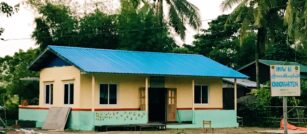
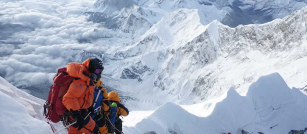
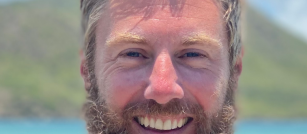


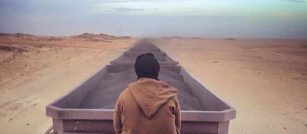
 As you know, blogging changed my life. I left Ireland broke, with no plan, with just a one-way ticket to Thailand
and no money. Since then, I started a blog, then a digital media company, I've made
more than $1,500,000 USD, bought 4 properties and visited (almost) every country in the world. And I did it all from my laptop as I
travel the world and live my dream. I talk about how I did it, and how you can do it too, in my COMPLETELY FREE
Ebook, all 20,000
words or so. Just finish the process by putting in your email below and I'll mail it right out to you immediately. No spam ever too, I promise!
As you know, blogging changed my life. I left Ireland broke, with no plan, with just a one-way ticket to Thailand
and no money. Since then, I started a blog, then a digital media company, I've made
more than $1,500,000 USD, bought 4 properties and visited (almost) every country in the world. And I did it all from my laptop as I
travel the world and live my dream. I talk about how I did it, and how you can do it too, in my COMPLETELY FREE
Ebook, all 20,000
words or so. Just finish the process by putting in your email below and I'll mail it right out to you immediately. No spam ever too, I promise!
